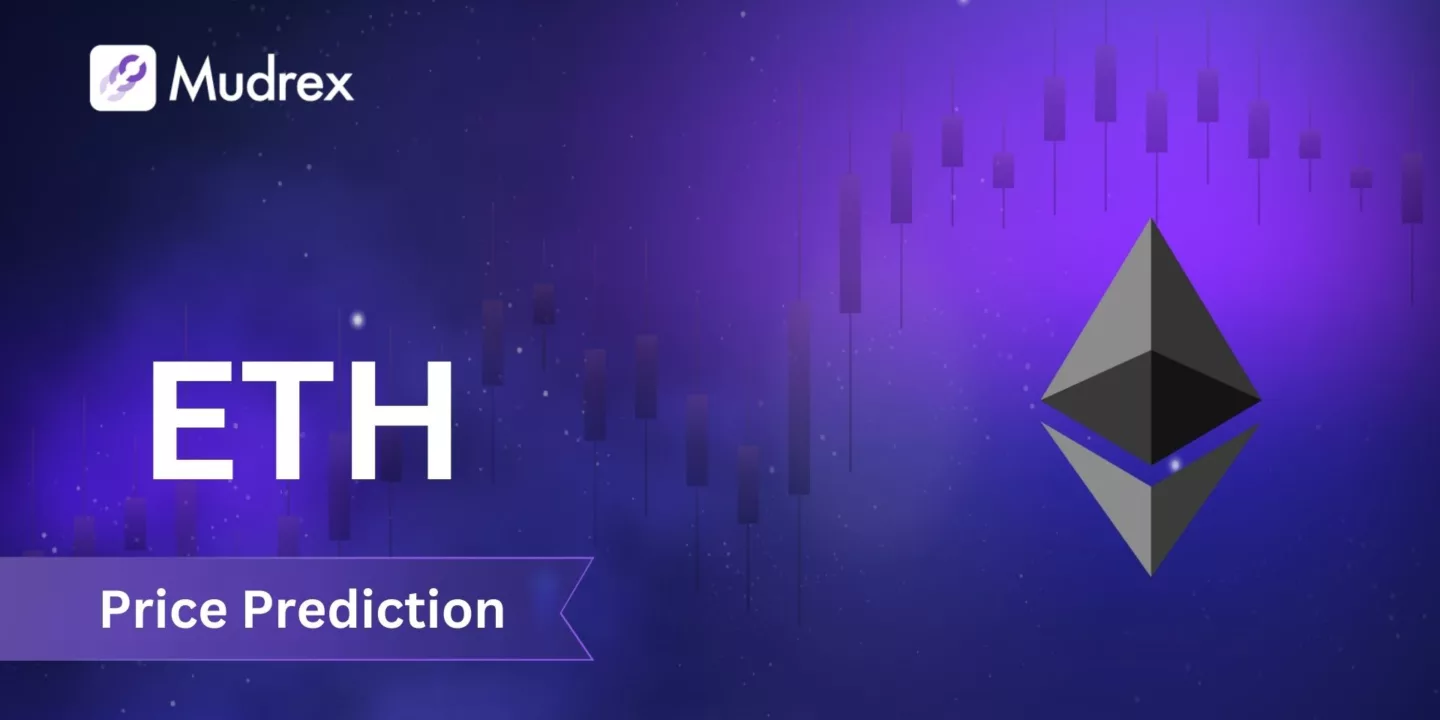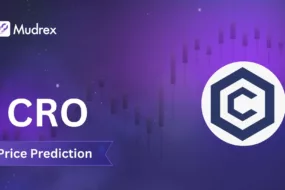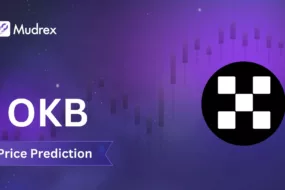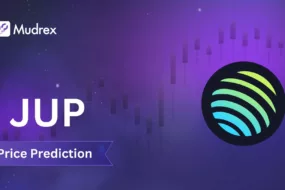
Ethereum (ETH) remains the second-largest cryptocurrency by market capitalization and continues to lead in decentralized finance (DeFi) and non-fungible tokens (NFTs). Ethereum’s technological upgrades, like The Merge and its Layer 2 scaling solutions, are paving the way for future price growth. This article provides an in-depth analysis of Ethereum’s historical performance, technical indicators, and fundamental metrics to project price predictions for 2024 through 2030.
What is Ethereum (ETH)?
History and Founding:
Ethereum, co-founded by Vitalik Buterin in 2015, introduced the concept of smart contracts, enabling decentralized applications (dApps) to run on its blockchain. Since its inception, Ethereum has grown into the backbone of decentralized finance (DeFi) and non-fungible tokens (NFTs).
Consensus Mechanism:
Ethereum transitioned from Proof of Work (PoW) to Proof of Stake (PoS) in 2022 with The Merge, reducing its energy consumption by over 99%. PoS secures the network using staked Ether (ETH), making Ethereum more energy-efficient and scalable.
Key Features and Innovations:
- Smart Contracts: Ethereum allows developers to create self-executing contracts, enabling a wide range of decentralized applications.
- DeFi and NFTs: Ethereum leads in both the DeFi and NFT markets, providing the foundation for the majority of these applications.
- EIP-1559: This Ethereum Improvement Proposal (EIP) introduced a deflationary mechanism by burning a portion of transaction fees, reducing the total circulating supply of ETH over time.
Historical Price Performance
Major Bull Runs and Price Peaks:
Ethereum experienced significant bull runs in 2017 during the ICO boom and again in 2021, peaking at an all-time high of $4,891 in November 2021. The growth of DeFi and NFTs during these periods fueled Ethereum’s price appreciation.
Bear Market Downturns:
ETH has also seen its share of bear markets, notably in 2018 when prices dropped below $100, and in 2022 when Ethereum fell to $881 amidst broader market corrections and economic uncertainty.
Current Price and Market Sentiment:
Ethereum is currently consolidating below $2,800, with key resistance levels at $2,824 and strong support around $2140. Sentiment remains mixed, with cautious optimism due to potential ETF approvals and Layer 2 scaling solutions.
Fundamental Analysis of Ethereum (ETH)
Supply Metrics:
Ethereum’s circulating supply is approximately 120.37 million ETH. Since the EIP-1559 upgrade, Ethereum has adopted a deflationary model, burning a portion of transaction fees and reducing the overall supply during periods of high network activity.
Staking and Inflation Models:
Since The Merge, Ethereum’s inflation rate has dropped below 2%. Validators staking ETH contribute to securing the network, reducing the circulating supply of tokens, which further supports price stability and growth.
Team and Leadership:
Vitalik Buterin continues to lead Ethereum’s development, supported by a global community of developers. The Ethereum Foundation has been instrumental in the network’s continued upgrades, particularly around scalability and sustainability.
Institutional and Retail Adoption:
Ethereum’s growing adoption in the DeFi and NFT spaces, coupled with rising institutional interest, positions it as a critical player in the blockchain ecosystem. Institutional demand is expected to increase with the approval of Ethereum ETFs, leading to greater liquidity and price appreciation.
Technical Analysis of Ethereum (ETH)
Moving Averages (EMA 21, EMA 50, EMA 200):
Ethereum’s price currently hovers between the EMA 50 and EMA 200, with EMA 200 providing key support around $2,215. The EMA 50 has recently acted as resistance, with Ethereum struggling to break above this level at $2,824.
- EMA 21: Short-term momentum remains bearish, as the price stays below the EMA 21.
- EMA 50: The EMA 50, currently at $2,824, is a key resistance level. If Ethereum breaks above this, it could signal a bullish reversal in the mid-term.
- EMA 200: The price is near the EMA 200, which acts as strong support around $2,215. A break below this level could trigger a deeper correction.
The wider gap between the EMA 50 and EMA 200 indicates that Ethereum is still in a bearish phase, though a mean reversion is possible if buying pressure returns.
Relative Strength Index (RSI):
The RSI is currently neutral, hovering around 50. This indicates a phase of consolidation, where neither bulls nor bears have control. A drop below 40 would confirm bearish momentum, likely pushing Ethereum toward the $2,215 support level. On the other hand, a move above 60 would suggest bullish strength, especially if it coincides with increased volume.
- RSI Neutral Zone (40-60): Ethereum’s RSI in this range suggests indecision in the market. However, a breakout above 60 would likely signal a stronger bullish move.
- Bearish Momentum Below 40: A fall below this level would increase selling pressure.
MACD (Moving Average Convergence Divergence):
The MACD line is currently above the signal line, indicating weak bullish momentum. However, the flattening histogram suggests that this momentum is fading, and a potential bearish crossover could reinforce a further decline. If the MACD crosses below the signal line, it would confirm the continuation of the downtrend.
- Bearish Divergence: Ethereum may face further downside pressure if the MACD crosses below the signal line.
- Weak Bullish Momentum: Currently, the MACD indicates weak momentum, but an increase in buying volume could prevent a bearish crossover.
Fibonacci Retracement Levels:
Ethereum’s price aligns closely with key Fibonacci retracement levels. The 61.8% and 78.6% retracement levels, which are typically strong support zones, are near $2,215 and $2,100, making these critical areas to watch for potential rebounds.
Volume Profile (VPVR):
The Volume Profile Visible Range (VPVR) suggests that significant trading activity has taken place between $2,100 and $2,250, forming a strong support zone. If Ethereum breaks below this, the next high-volume support zone doesn’t appear until $2,000.
Psychological Price Levels:
Ethereum’s psychological price levels, such as $2,000, $3,000, and $4,000, play a key role in price movement. A break above $3,000 would not only be technically significant but also trigger psychological buying, pushing the price toward higher resistance levels.
Key Support and Resistance Zones:
- Support: $2,215 (EMA 200), $2,100 (Fibonacci retracement)
- Resistance: $2,824 (EMA 50), $3,200 (psychological and technical barrier)
News and Sentiment Analysis of Ethereum (ETH)
Key Partnerships and Developments:
The anticipated approval of Ethereum ETFs could significantly increase institutional participation, driving demand and liquidity. In addition, the Dencun upgrade, scheduled for early 2024, is expected to reduce transaction costs and enhance Layer 2 scalability, making Ethereum more competitive.
Market Sentiment and Social Media Trends:
Sentiment remains cautiously bullish. Ethereum’s dominance in DeFi and NFT markets, combined with Layer 2 scaling solutions, continues to drive positive sentiment on social media platforms, despite regulatory uncertainties.
Ethereum Price Predictions for 2024 to 2030
| Year | Price Prediction (USD) | Key Factors Driving Prediction |
| 2024 | $2,100 – $3,400 | ETF approval, Layer 2 scaling, regulatory clarity |
| 2025 | $3,500 – $4,500 | Ethereum 2.0 adoption, institutional interest, macroeconomic improvements |
| 2026 | $4,000 – $5,000 | DeFi/NFT growth, Layer 2 scaling success, global adoption |
| 2027 | $5,000 – $6,000 | Continued DeFi dominance, technological upgrades, regulatory support |
| 2028 | $6,000 – $7,500 | Global integration of Ethereum in finance, scalability improvements |
| 2029 | $7,500 – $10,000 | Institutional use of Ethereum, Layer 2 enhancements, rising ETH demand |
| 2030 | $10,000 – $15,000 | DeFi/NFT leadership, ETH as a global financial platform, Layer 2 adoption |
2024 Price Prediction: $2,100 – $3,400
ETF Approval: Institutional interest is expected to rise if Ethereum ETFs are approved, driving liquidity and demand. This could help Ethereum break above key resistance levels, pushing the price toward $3,400. Layer 2 Scaling: With solutions like Arbitrum and Optimism gaining traction, Ethereum’s scalability and transaction throughput will improve, boosting adoption and price.
2025 Price Prediction: $3,500 – $4,500
Ethereum 2.0 and Institutional Adoption: The full implementation of Ethereum 2.0 will enhance scalability and security, attracting more institutional investments. This, combined with macroeconomic improvements, could push Ethereum to $4,500.
2026 Price Prediction: $4,000 – $5,000
DeFi and NFT Growth: Ethereum’s dominance in DeFi and NFTs, coupled with successful Layer 2 solutions, will drive its price higher. Increased adoption across decentralized applications will support a price range of $4,000 to $5,000.
2027 Price Prediction: $5,000 – $6,000
Technological Upgrades: Ethereum’s continuous technological advancements and regulatory support will help it retain its leadership in the blockchain space, pushing the price toward $6,000.
2028 Price Prediction: $6,000 – $7,500
Global Financial Integration: Ethereum’s integration into traditional finance through tokenized assets and smart contract solutions will further increase its adoption, driving prices to $7,500.
2029 Price Prediction: $7,500 – $10,000
Institutional Use: The rise of institutional use cases and Ethereum’s scalability improvements will support a price increase toward $10,000.
2030 Price Prediction: $10,000 – $15,000
DeFi/NFT Leadership: By 2030, Ethereum could reach between $10,000 and $15,000, driven by its leadership in DeFi and NFTs, as well as its role in global financial systems.
Factors Contributing to Price Predictions:
- Institutional Adoption: The potential approval of Ethereum ETFs in 2024 could significantly boost institutional adoption. ETFs will make it easier for traditional investors to access Ethereum, driving liquidity and demand. Additionally, Ethereum’s adoption in enterprise blockchain solutions and DeFi ecosystems will contribute to long-term growth.
- Ethereum 2.0 and Layer 2 Solutions: Ethereum 2.0, with its Proof of Stake consensus and Layer 2 solutions like Optimism and Arbitrum, will improve scalability and reduce transaction fees. This will enhance Ethereum’s competitive position against other blockchains and attract more developers, dApps, and users.
- Deflationary Mechanisms: Ethereum’s EIP-1559 fee-burning mechanism has introduced deflationary pressure on the supply. As network usage increases, more ETH is burned, decreasing the overall supply, which supports higher prices over time.
- Macroeconomic Conditions: Global macroeconomic conditions, such as interest rate policies and inflation, will play a role in the speculative nature of digital assets. A favorable macroeconomic environment, particularly lower interest rates, could drive more investment into risk assets like Ethereum.
- DeFi and NFT Leadership: Ethereum’s dominance in the DeFi and NFT markets continues to drive its price. As the most utilized blockchain for decentralized applications, Ethereum’s role in facilitating DeFi protocols and NFT marketplaces is crucial for maintaining demand and driving price appreciation.
Frequently Asked Questions (FAQs)
1. What will Ethereum be worth in 2025?
Ethereum is expected to trade between $3,500 and $4,500 in 2025. This forecast is based on Ethereum’s increasing institutional adoption, the successful integration of Ethereum 2.0, and a favorable macroeconomic environment.
2. Can Ethereum reach $10,000 by 2030?
Yes, Ethereum could reach $10,000 by 2030. This price range is achievable if Ethereum maintains its dominance in DeFi and NFTs, successfully scales its network, and continues to attract institutional use cases.
3. What is the expected price in 2040?
While it is difficult to project prices for 2040, Ethereum could be trading well above $15,000, depending on its continued dominance in DeFi, NFTs, and global financial systems.
4. Is Ethereum a good investment?
Yes, Ethereum is considered a strong investment for both short- and long-term horizons due to its dominance in DeFi, NFTs, and ongoing technological innovations. However, investors should be aware of regulatory risks and competition from other blockchain platforms.
Conclusion:
Ethereum’s price outlook for 2024 to 2030 is positive, driven by major catalysts such as ETF approvals, Layer 2 scaling, and institutional adoption. Technological upgrades, including Ethereum 2.0, will ensure Ethereum’s dominance in DeFi and NFTs. By 2030, Ethereum could reach $10,000 to $15,000, becoming a key component of the global financial system. Stay updated with Mudrex Learn for more insights and cryptocurrency predictions!




